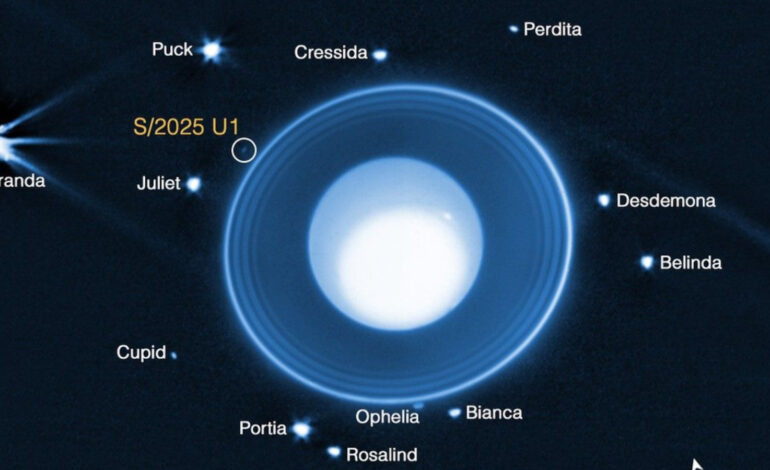James Webb Telescope Unveils New Moon Orbiting Uranus

A team of scientists from the Southwest Research Institute has identified a previously unknown moon in our solar system, utilizing data captured by the James Webb Space Telescope. This new celestial body, designated as S/2025 U1, orbits Uranus in a “nearly circular” path. Measuring just six miles in diameter, this moon is so diminutive that it eluded detection from prior missions, including NASA’s Voyager 2, which flew past Uranus over 40 years ago.
The moon was revealed through a series of ten 40-minute exposures taken with Webb’s Near-Infrared Camera. These observations have contributed to a more comprehensive understanding of our solar system. The newly discovered moon orbits at a distance of approximately 35,000 miles from the center of Uranus, which is about 15% of the distance from the Earth to its Moon. Like Uranus’s other 28 moons, S/2025 U1 resides within the planet’s ring system.
Insights into Uranus’s Unique Moons
According to research team member Matthew Tiscareno, “No other planet has as many small inner moons as Uranus, and their complex inter-relationships with the rings hint at a chaotic history that blurs the boundary between a ring system and a system of moons.” Understanding how these moons and rings formed remains an area of active investigation. It is believed that moons can be torn apart by the gravity of their parent planet, leading to debris that may form rings. Over time, this debris can coalesce, potentially giving rise to new moons.
The discovery of S/2025 U1 offers an important opportunity to study these processes in detail.
Future Naming and Ongoing Observations
While currently referred to as S/2025 U1, this moon is awaiting a more evocative name. The moons of Uranus are known for their literary connections, named after characters from the works of William Shakespeare and Alexander Pope. Names such as Ophelia, Bianca, and Puck reflect this trend, and the International Astronomical Union is expected to consider these influences when finalizing a more fitting name for the new moon.
Meanwhile, the James Webb Space Telescope continues its operations at the second Lagrange point between the Earth and the Sun. It is capturing unprecedented images in the darkest reaches of space. While NASA oversees the telescope, scientific teams can request observational time through the General Observers program, which facilitated the discovery of S/2025 U1.
As researchers delve deeper into the mysteries of our solar system, the revelation of this tiny moon underscores the potential for new discoveries that can reshape our understanding of celestial dynamics. There may be more hidden neighbors waiting to be found.






